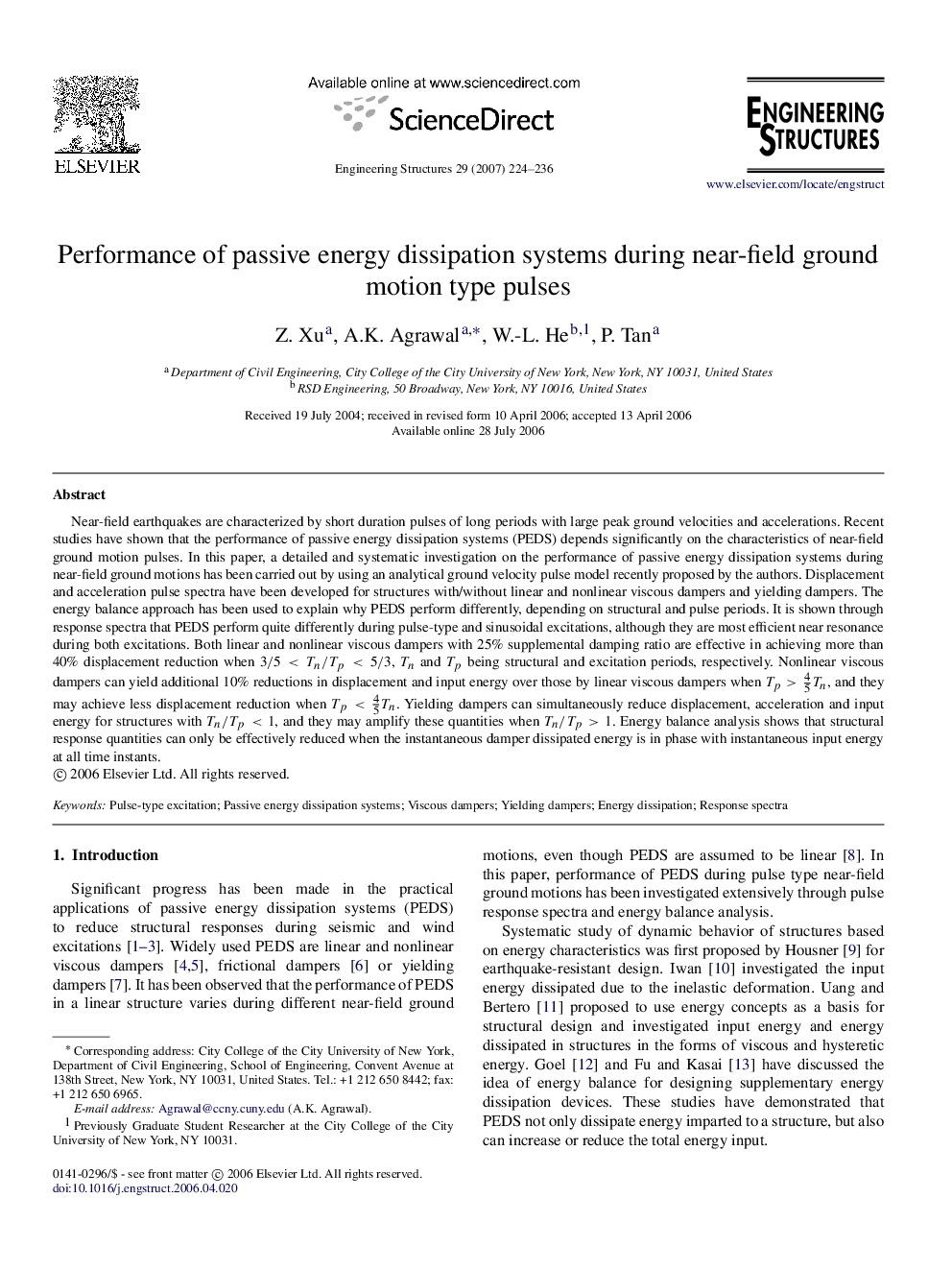| Article ID | Journal | Published Year | Pages | File Type |
|---|---|---|---|---|
| 269292 | Engineering Structures | 2007 | 13 Pages |
Near-field earthquakes are characterized by short duration pulses of long periods with large peak ground velocities and accelerations. Recent studies have shown that the performance of passive energy dissipation systems (PEDS) depends significantly on the characteristics of near-field ground motion pulses. In this paper, a detailed and systematic investigation on the performance of passive energy dissipation systems during near-field ground motions has been carried out by using an analytical ground velocity pulse model recently proposed by the authors. Displacement and acceleration pulse spectra have been developed for structures with/without linear and nonlinear viscous dampers and yielding dampers. The energy balance approach has been used to explain why PEDS perform differently, depending on structural and pulse periods. It is shown through response spectra that PEDS perform quite differently during pulse-type and sinusoidal excitations, although they are most efficient near resonance during both excitations. Both linear and nonlinear viscous dampers with 25% supplemental damping ratio are effective in achieving more than 40% displacement reduction when 3/5
